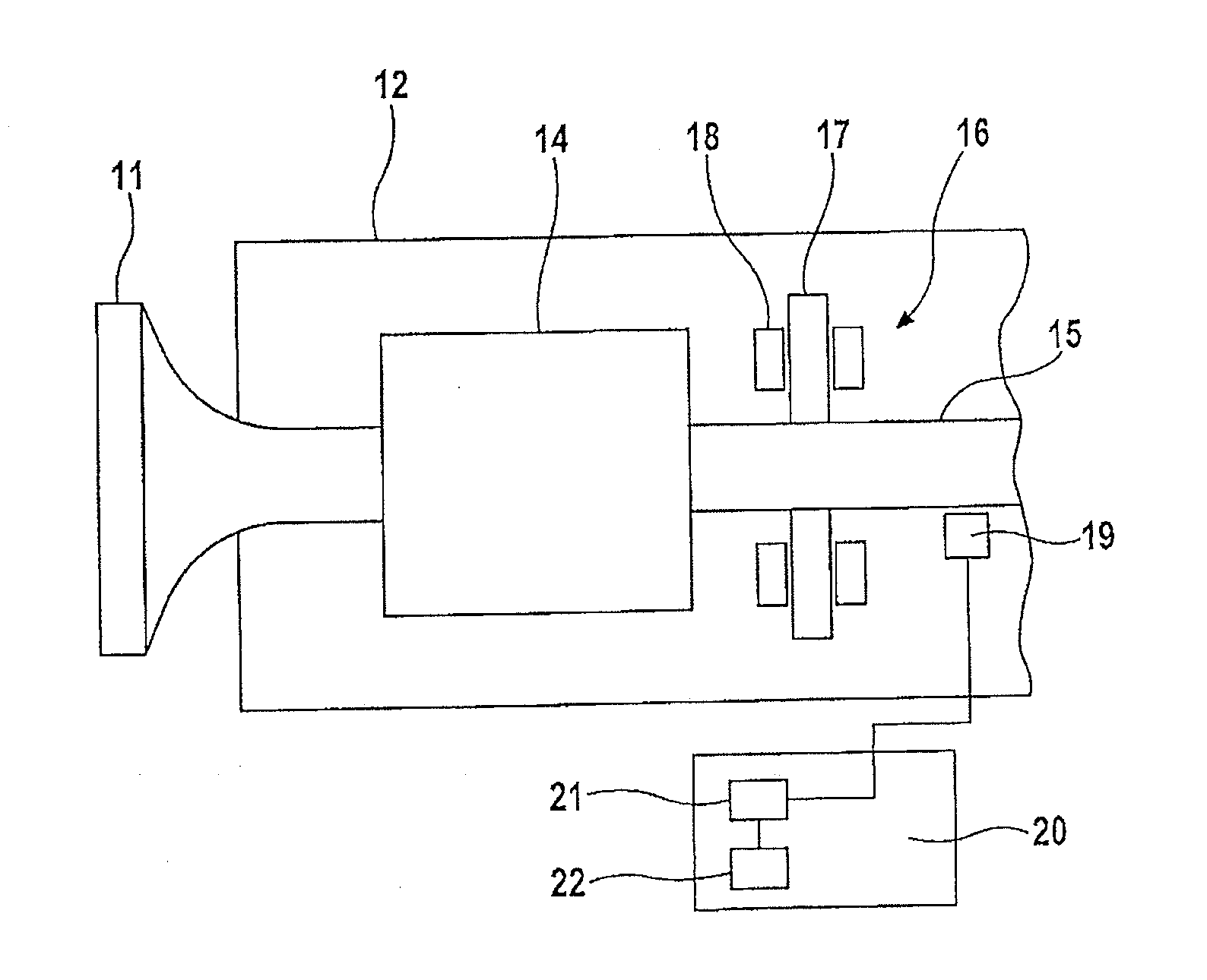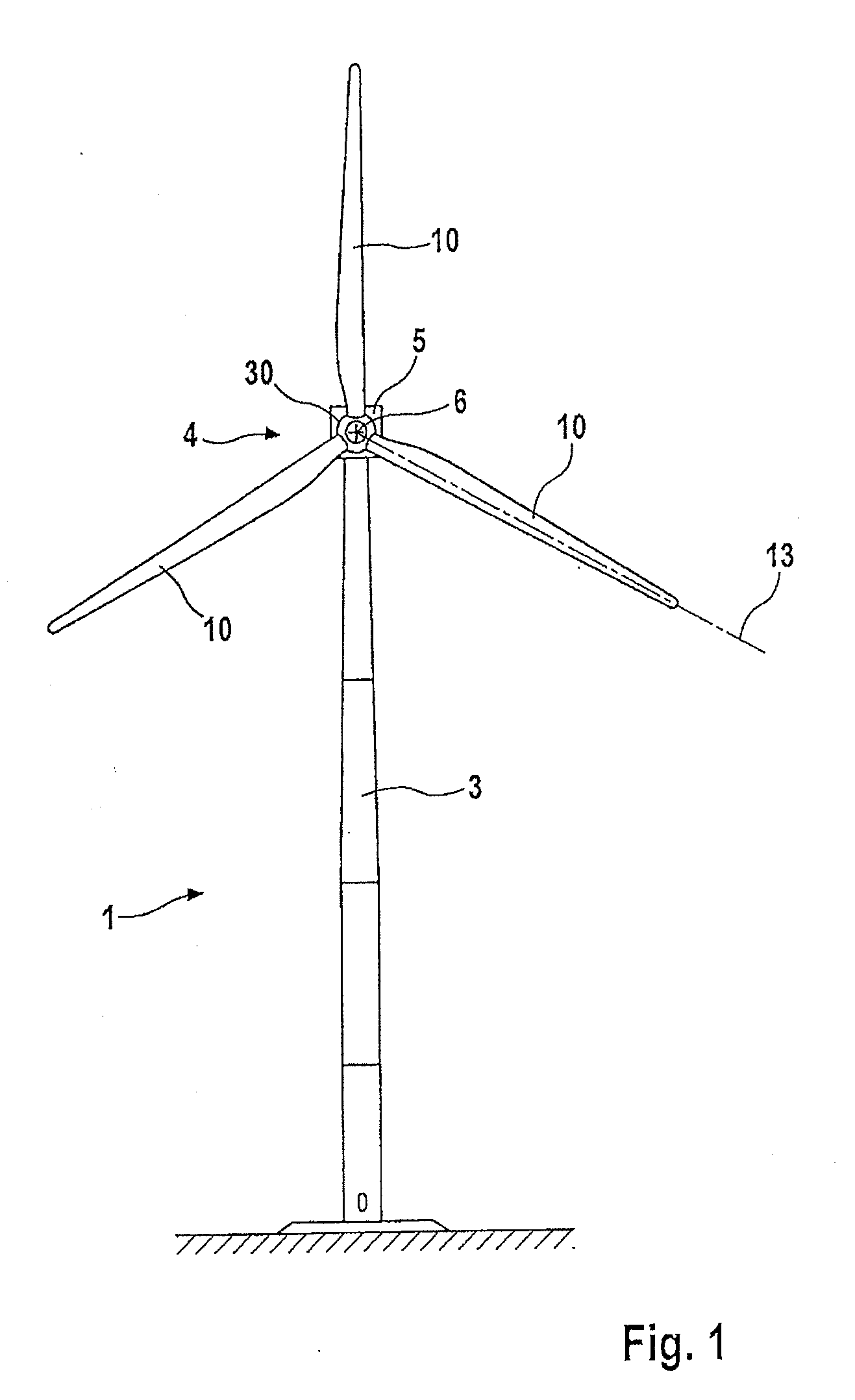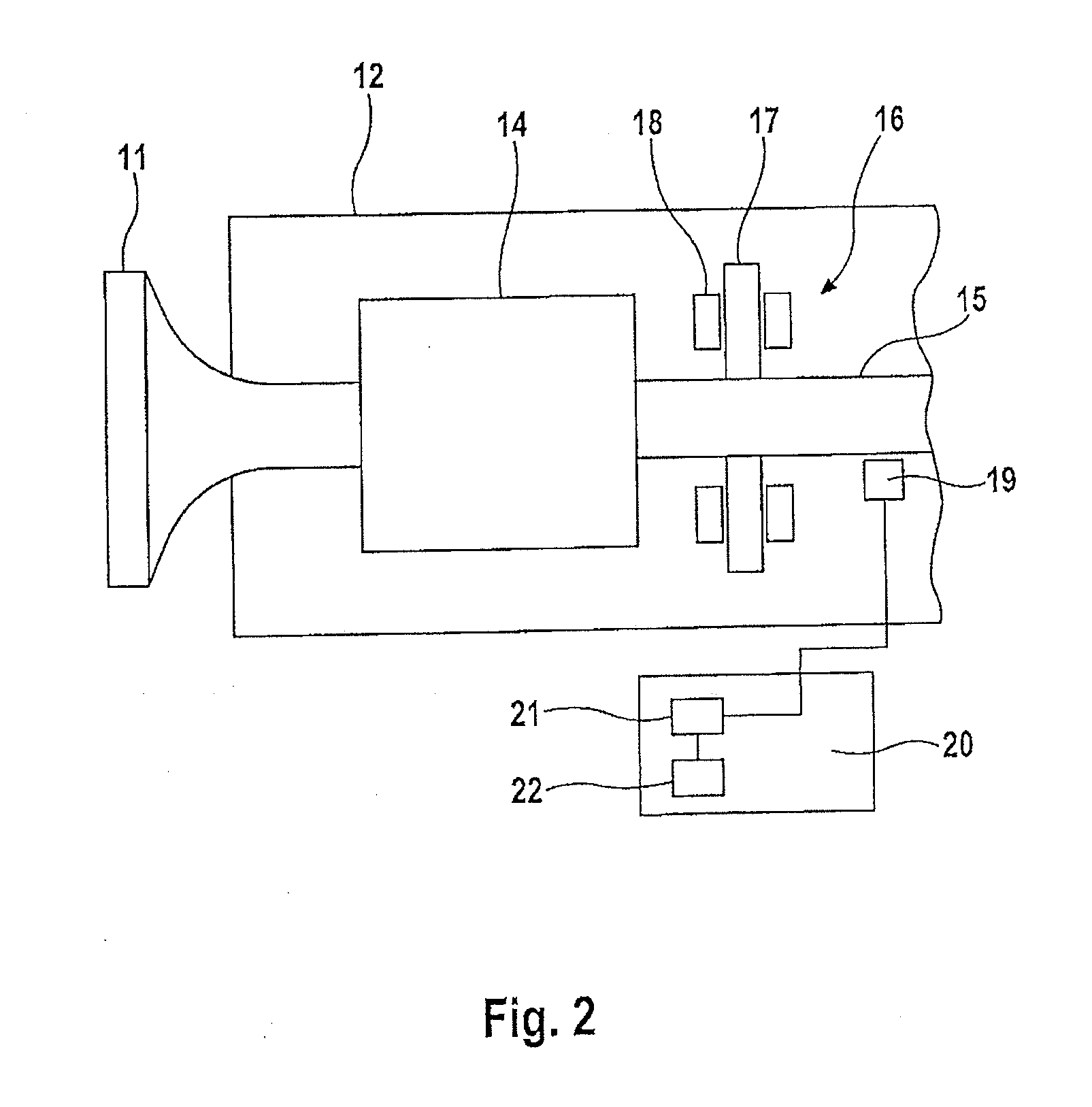Method for braking state monitoring and wind energy installation for carrying out the method
a technology of wind energy installation and braking state, which is applied in the direction of instruments, nuclear elements, machines/engines, etc., can solve the problems of maintenance effort, and achieve the effect of reducing computation complexity and determining the characteristic value of braking state more accurately
- Summary
- Abstract
- Description
- Claims
- Application Information
AI Technical Summary
Benefits of technology
Problems solved by technology
Method used
Image
Examples
Embodiment Construction
[0030]FIG. 1 shows a wind energy installation 1 with a tower 3, a machine housing which is mounted on the tower such that it can rotate about a vertical wind readjustment axis, a rotor 4 which is mounted such that it can rotate about a substantially horizontal axis 6 and has a rotor hub 30 on which three rotor blades 10 are arranged. The rotor blades are arranged on the rotor hub 30 such that the pitch angle is adjustable about a blade adjustment axis 13, which is shown by way of example for one rotor blade 10 in FIG. 1 and coincides substantially with the blade longitudinal axis.
[0031]Some of the components of the wind energy installation from FIG. 1 are illustrated schematically in FIG. 2. A rotor shaft 11 extends into the machine housing 12, and opens in a transmission 14. The slow rotation of the rotor blades 11 is stepped up to a higher rotation speed in the transmission 14, and is transmitted to a generator shaft 15. The generator shaft 15 drives a generator, which is not illu...
PUM
 Login to View More
Login to View More Abstract
Description
Claims
Application Information
 Login to View More
Login to View More - R&D
- Intellectual Property
- Life Sciences
- Materials
- Tech Scout
- Unparalleled Data Quality
- Higher Quality Content
- 60% Fewer Hallucinations
Browse by: Latest US Patents, China's latest patents, Technical Efficacy Thesaurus, Application Domain, Technology Topic, Popular Technical Reports.
© 2025 PatSnap. All rights reserved.Legal|Privacy policy|Modern Slavery Act Transparency Statement|Sitemap|About US| Contact US: help@patsnap.com



